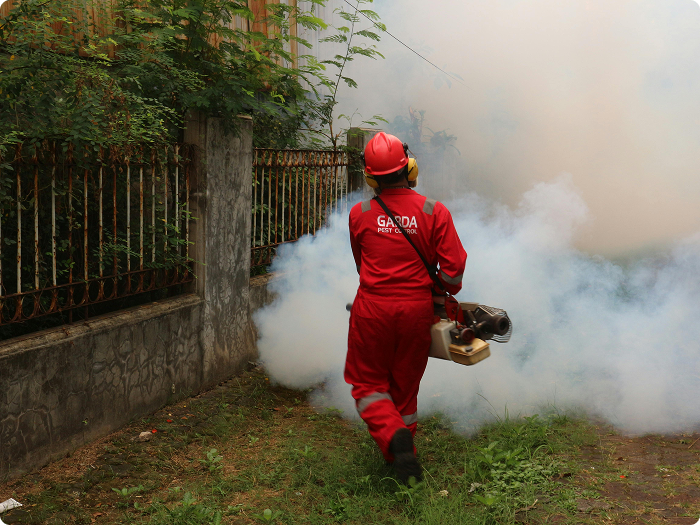Rodent Control: Tackling Mice Infestations, Rat Removal, and Rodent-Proofing
By Jennifer Barnett · Jul 25, 2025

Rodents can be a homeowner's worst nightmare, causing damage and posing health risks. Effectively managing rodent control is essential to maintain a safe and healthy living environment. Mice infestations and the need for rat removal are common issues many homeowners face, so knowing how to identify signs of rodent infestation and implement robust rodent-proofing measures is crucial. This guide will provide you with the insights and strategies needed to combat rodent problems head-on. Let's dive into the comprehensive world of rodent control to ensure your home remains rodent-free.
Understanding Rodent Infestations
Signs of Rodent Infestation
Recognizing the signs of a rodent infestation early can help mitigate damage and health risks. Common indicators include:
- Droppings: Small, pellet-like droppings are a clear sign of mice or rats.
- Gnaw Marks: Rodents gnaw on wires, wood, and other materials to keep their teeth sharp.
- Noise: Scratching or scurrying sounds in walls, ceilings, or attic spaces often indicate rodent activity.
- Nests: Shredded paper, fabric, or insulation can be used by rodents to create nesting sites.
- Tracks or Runways: Dusty footprints or greasy smudge marks along walls and baseboards.
Health Risks of Rodent Infestations
Rodents can pose several health risks:
- Disease Transmission: Rodents carry diseases such as Hantavirus, Salmonella, and Leptospirosis.
- Allergies and Asthma: Rodent droppings and urine can exacerbate allergies and asthma.
- Food Contamination: Rodents can contaminate food supplies, leading to foodborne illnesses.
Mice Infestation: Identifying and Managing
Common Entry Points for Mice
Mice can enter homes through various means. Common entry points include:
- Small Cracks and Gaps: Mice can squeeze through openings as small as a dime.
- Doors and Windows: Poorly sealed doors and windows are easy access points.
- Utility Lines and Pipes: Gaps around utility entrances, pipes, and vents can allow mice entry.
Effective Mice Infestation Management
- Seal Entry Points: Use caulk, steel wool, or other materials to seal gaps and cracks.
- Remove Food Sources: Store food in airtight containers and keep areas clean.
- Use Traps and Baits: Snap traps, live traps, and bait stations can effectively control mice populations.
- Professional Extermination: For severe infestations, consider professional extermination services.
Rat Removal: Techniques and Strategies
Identifying Rat Infestations
Rats are larger than mice and can cause significant damage. Signs of a rat infestation include:
- Larger Droppings: Rat droppings are larger than those of mice.
- Burrow Holes: Rats dig burrows around foundations, under debris, and close to food sources.
- Grease Marks: Rats leave larger, darker grease marks along walls and entry points.
Methods for Rat Removal
- Trapping: Use snap traps, live traps, or electronic traps specifically designed for rats.
- Baiting: Use rodenticides in bait stations, ensuring safe placement to prevent harm to pets and children.
- Exclusion: After removal, seal all entry points to prevent re-entry.
- Sanitation: Maintaining cleanliness deters rats from setting up residence.
Rodent-Proofing Your Home
Preventative Measures for Rodent-Proofing
Rodent-proofing is essential to prevent future infestations. Key preventative measures include:
- Sealing Entry Points: Regularly inspect and seal gaps around doors, windows, pipes, and foundation.
- Yard Maintenance: Keep your yard clean and free from debris, trim overgrown vegetation, and remove nesting sites.
- Storage Practices: Store food in sealed containers and keep storage areas tidy.
- Garbage Management: Use rodent-proof trash cans and dispose of waste properly.
Maintaining a Rodent-Free Home
- Regular Inspections: Conduct regular home inspections to identify and address potential entry points.
- Use of Repellents: Natural repellents like peppermint oil and ultrasonic devices can help deter rodents.
- Professional Rodent-Proofing Services: Consider hiring professionals for comprehensive rodent-proofing.
Dealing with Severe Infestations
When to Call a Professional
While DIY methods can be effective, severe infestations often require professional intervention. Seek help when:
- DIY Methods Fail: If traps and baits aren't reducing rodent populations.
- Health Risks Increase: Presence of diseases, allergies, or contamination concerns.
- Structural Damage: Significant damage that compromises your home's structure.
Choosing a Rodent Control Professional
When selecting a professional:
- Research and Reviews: Look for well-reviewed companies with proven track records.
- Licensing and Certification: Ensure the company is licensed and certified for pest control.
- Integrated Pest Management (IPM): Opt for companies that use sustainable, comprehensive approaches to rodent control.
Conclusion
Effective rodent control encompasses a variety of strategies, from identifying signs of infestations to managing and preventing mice and rat populations. Regular maintenance, prompt addressing of any signs of infestation, and professional interventions when necessary are crucial for maintaining a rodent-free home. By implementing these measures, you can protect your home from damage and health risks posed by rodents.
For further assistance or to connect with experienced rodent control professionals, consider using HouzTask AI. Visit HouzTask AI to ask questions or Find a Pro to connect with experts in rodent control.
Need help?
Let HouzTask help you diagnose the issue or connect with a trusted local pro — in minutes.
Get Started with HouzTask